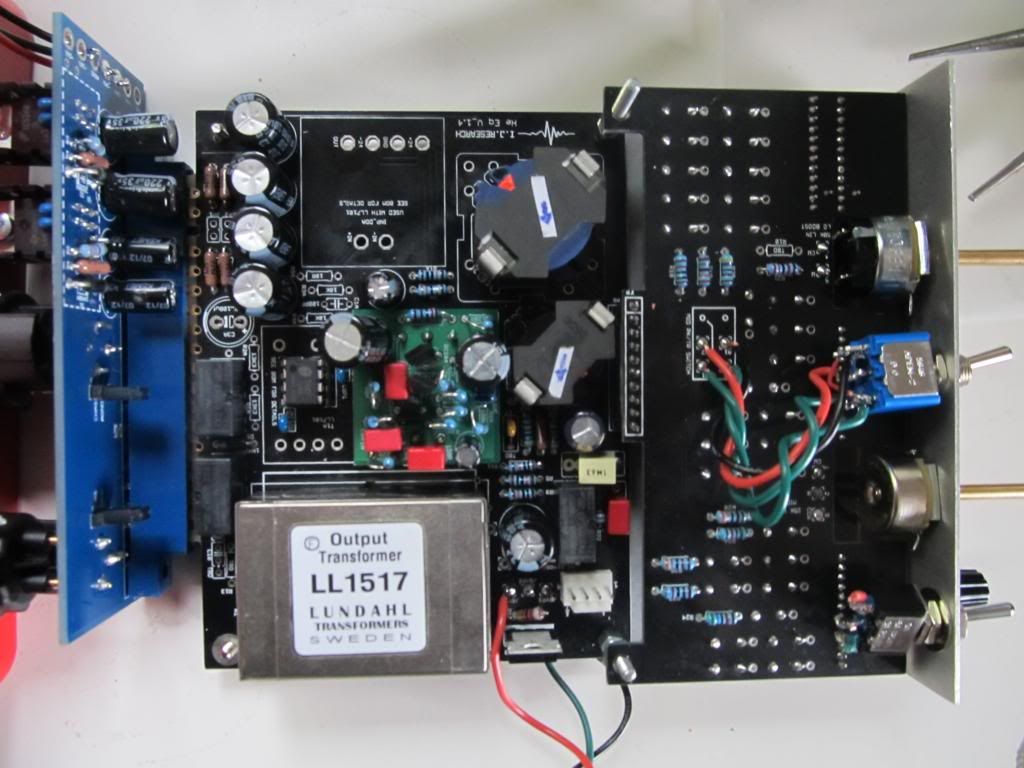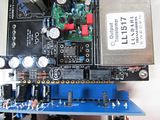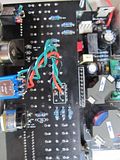Looking to build this with the THAT chip input option and trafo output.
Anyone done one like this? Any hints/things I should be wary of?
Bit stuck on finding the values for the zobel network - R13, R14, C10 - anyone want to share their values?
LL1517 seems to be most readily available trafo in UK so will use that.
I'm putting together a mouser BOM for this specific option (minus the grayhills, trafo's and a couple of other bits mouser doesn't stock) and would like to get it all in one go (avoid paying lots of p&p!). It currently misses R13, R14, C10. The relays also aren't there as the only suitable ones had a lead time of 23 weeks, so I'll use Farnell for those. Grayhills from Digikey.
http://www.mouser.com/ProjectManager/ProjectDetail.aspx?AccessID=b2048887f3
http://uk.farnell.com/te-connectivity/fx2-d3243/relay-pcb-dpco-5vdc/dp/9913947?Ntt=9913947
For the knobs, Igor wrote this on the 1st page:
"The knobs are ELMA.
In Israel, they are available from local distributor (MOQ = 100+); in small quantities,
these knobs, usually in black, are available from Farnell.
10mm wing knob, 10mm knob, grey, without line, + black skirt with line, + black cap with line; 3.15mm shaft.
The great advantage of these knobs is they are available in sizes 9...45mm for every possible shaft,
can be stacked for concentric pots, can be used with skirt/pointer, etc. Excellent quality BTW.
http://il.farnell.com/jsp/search/browse.jsp?N=2017+202401&Ntk=gensearch&Ntt=elma+knob&Ntx=mode+matchallpartial"







